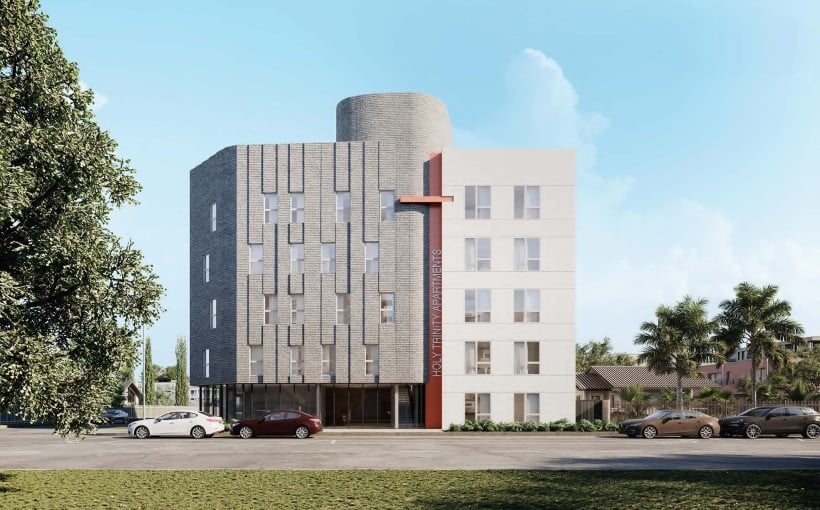This article is the fourth installment in a series that explores the student housing sector. Previous articles, such as “Analyzing Debt, Equity and Student Housing,” “Student Housing in 2023: Stagnation? Or Continued Investor Interest?” and “Educational Overview: Student Housing vs Multifamily” are now available for reading.
Numerous articles have painted a positive outlook for student housing during the 2024-2025 school year, citing strong preleasing numbers and increasing enrollment rates. However, Connect CRE has consulted with industry experts to dig deeper into these projections and examine potential challenges that may arise in 2024.
Capital Market Challenges
As expected, the student housing sector continues to face liquidity and capital challenges outlined in previous reports. Mitchell Korte of Subtext’s Executive Vice President Development notes that this market faces similar obstacles as other commercial real estate sectors due to factors like interest rates and market volatility.
Andrew Layton of Student Quarters also points out another challenge – an expectation gap between buyers’ expectations versus sellers’. However he believes this will be resolved by mid-2024. Parker Champion from Champion Real Estate Company adds that buy/sell performance will largely depend on actions taken by Federal Reserve; if interest rates decrease then activity is likely to increase.
Sean Baird from Colliers also mentions debt availability (or lack thereof) being potentially challenging throughout the year but remains optimistic about future prospects as long as student housing maintains its strong performance while hoping for more stable interest rate conditions within capital markets which would lead towards increased transaction volumes according his role leading National Housing Group at Colliers .
Brent Little from Fountain Residential Partners further explains how any potential distress can be offset through continued rent growth even if elevated interests remain high since it prevents prevalence of asset distress when compared against multifamily collections during COVID pandemic shutdowns despite many universities closing their doors on physical instruction methods said Brent Little who serves president position at Fountain Residential Partners.
Construction Hurdles
Another issue discussed by experts is the supply and demand imbalance in student housing. While there is a high demand for this type of housing, deliveries continue to lag behind. Brent Little explains that investors need longer construction timelines and must be more diligent in their research due to late deliveries negatively impacting the product.
Eric Gould from PMA also adds that general contractors struggle with finding skilled laborers which leads towards fewer units being built as well as sluggish delivery times. He further mentions how it’s becoming increasingly difficult for workers to work extra hours or weekends despite getting paid premium rates because of lack availability among workforce according his role serving Senior Project Manager & Student Housing Expert at PMA .
The Future: Continued Strength
When asked about future prospects for student housing sector over next year, experts believe two words best describe what we can expect – stability and growth.
On one hand enrollment has reached all-time highs which helps drive up demand within this market segment since universities require students somewhere place them while they pay tens thousands dollars tuition fees per semester; therefore students don’t want live inside old buildings falling apart due deferred maintenance issues said Eric Gould who serves Senior Project Manager position at PMA .
Mitchell Korte adds that despite volatility within markets along with uncertainty surrounding interest rates, fundamentals like enrollment numbers & supply/demand ratios mean “the sector will likely outperform most other asset classes” according his role Executive Vice President Development Subtext where he works today full time basis since 2010 after graduating college degree program focused on real estate development activities such commercial properties residential homes apartments condominiums etcetera located throughout United States America Canada Mexico Europe Asia Africa Australia New Zealand South America Central Caribbean Islands Middle East North Pole Antarctica Greenland Iceland Russia China Japan Korea India Pakistan Bangladesh Nepal Bhutan Sri Lanka Maldives Indonesia Malaysia Singapore Thailand Vietnam Cambodia Laos Myanmar Philippines Taiwan Hong Kong Macau Brunei Timor-Leste Mongolia Kazakhstan Kyrgyzstan Tajikistan Uzbekistan Turkmenistan Afghanistan Iran Iraq Syria Lebanon Jordan Israel Palestine Kuwait Bahrain Qatar United Arab Emirates Oman Yemen Saudi Arabia Egypt Libya Tunisia Algeria Morocco Sudan South Sudan Eritrea Djibouti Somalia Kenya Uganda Tanzania Rwanda Burundi Seychelles Comoros Mauritius Madagascar Malawi Zambia Zimbabwe Botswana Namibia Angola Mozambique Lesotho Swaziland South Africa Democratic Republic Congo Gabon Equatorial Guinea Cameroon Central African Chad Niger Nigeria Benin Togo Ghana Cote d’Ivoire Liberia Sierra Leone Guinea Gambia Senegal Mali Burkina Faso Cape Verde Sao Tome Principe Saint Helena Ascension Tristan da Cunha Western Sahara Canary Islands Ceuta Melilla Madeira Azores Portugal Spain Andorra Gibraltar Monaco Vatican City San Marino Malta Croatia Slovenia Bosnia Herzegovina Serbia Montenegro Kosovo Macedonia Albania Greece Bulgaria Romania Moldova Ukraine Belarus Lithuania Latvia Estonia Russia Poland Czech Republic Slovakia Hungary Austria Switzerland Liechtenstein Germany Netherlands Belgium Luxembourg France UK Ireland Iceland Denmark Norway Sweden Finland Faroe Islands Greenland Svalbard Jan Mayen Island Isle Man Jersey Guernsey Alderney Sark Herm Jethou Lihou Brecqhou Channel Isles Mediterranean Sea Aegean Black Caspian Red Persian Arabian Indian Ocean Atlantic Pacific Arctic Oceans Seas Gulfs Straits Channels Sounds Lakes Rivers Waterways Canals Dams Reservoirs Ponds Streams Creeks Wells Springs Aquifers Groundwater Surface Underground Fresh Salt Brackish Potable Drinking Tap Bottled Mineral Sparkling Spring Well Artesian Hot Cold Warm Ice Glacial Rain Snow Hail Fog Mist Dew Vapor Steam Cloud Condensation Evaporation Transpiration Precipitation Collection Runoff Infiltration Percolation Storage Distribution Treatment Purification Filtration Desalination Reclamation Recycling Conservation Preservation Management Engineering Design Construction Maintenance Operations Inspection Testing Quality Control Assurance Compliance Regulation Safety Security Risk Assessment Mitigation Emergency Response Planning Preparedness Recovery Restoration Remediation Environmental Sustainability Renewable Energy Climate Change Global Warming Greenhouse Gas Emissions Carbon Footprint Biodiversity Conservation Preservation Management Sustainable Development Corporate Social Responsibility CSR Human Rights Labor Practices Ethics Transparency Governance Accountability Reporting Standards Guidelines Frameworks Certifications Ratings Indices Rankings Awards Recognition Incentives Tax Credits Subsidies Grants Loans Investments Venture Capital Private Equity Public Finance Debt Securities Bonds Stocks Mutual Funds ETFs REITs Derivatives Commodities Futures Options Swaps Contracts Agreements Leases Partnerships Joint Ventures Mergers Acquisitions Divestitures Spinoffs IPOs SPAC Reverse Takeovers Buyouts LBO MBO SBO ESOP PIPE CDO CMBS RMBS ABS CLO CLN CP MTN CD FDIC NCUA OCC OTS SEC FINRA NASD NYSE AMEX OTCBB PINK SHEETS TSX VSE MSE TASE JASDAQ KRX HKEx SGX ASX NZSX JSE SSE SZSE SEHK TWSE SET IDX KLCE BMF Bursa Malaysia PSX DFM ADGM ADFM MSM EGIDC ASE QE Tadawul TAIFEX SGCC ICE NYMEX COMEX CBOT CME KCBT MGEX IPE LIFFE Eurex MEFF MATIF TOCOM SFE SAFOMARINE SAFAFRICA SAFAMIDDLEEAST SAFEUROPE SAFEASIA PACIFIC ISDA FIA FOA FOW ICMA ISLA AFME PRIME IRSG IOSCO BCBS IAIS IOPS OECD IMF World Bank WTO UN EU ECB Eurozone EMU G7 G20 BRICS NAFTA TPP TTIP ASEAN GCC AUPEC OPEC IEA EIA REN21 UNEP IPCC FAO WHO UNESCO UNICEF UNHCR ITU WIPO WMO IMO ICAO ISO ITUC ETUC AFL-CIO SEIU UFCW IAM RWDSU ILGWU UAW USWA UMWA NEA AFT AFSCME SEIU CWA IBEW UAW USW IAM RWDSU ILGWU UNITE HERE UFCW NUPGE CUPE PSAC CLC OFL AFL-CIO Change to:
This article is the fourth installment in a series discussing the student housing sector. Previous articles, such as “Analyzing Debt, Equity and Student Housing,” “Student Housing in 2023: Stagnation? Or Continued Investor Interest?” and “Educational Overview: Student Housing vs Multifamily” are now available for reading.
Numerous articles have portrayed a positive outlook for student housing during the 2024-2025 school year, citing strong preleasing numbers and increasing enrollment rates. However, industry experts consulted by Connect CRE offer deeper insights into these projections while examining potential challenges that may arise in 2024.
Challenges in Capital Markets
As expected, liquidity and capital challenges continue to plague the student housing sector as outlined in previous reports. Mitchell Korte of Subtext’s Executive Vice President Development notes that this market faces similar obstacles as other commercial real estate sectors due to factors like interest rates and market volatility.
Andrew Layton of Student Quarters also points out another challenge – an expectation gap between buyers’ expectations versus sellers’. However he believes this will be resolved by mid-2024. Parker Champion from Champion Real Estate Company adds that buy/sell performance will largely depend on actions taken by Federal Reserve; if interest rates decrease then activity is likely to increase.
Sean Baird from Colliers also mentions debt availability (or lack thereof) being potentially challenging throughout the year but remains optimistic about future prospects as long as student housing maintains its strong performance while hoping for more stable interest rate conditions within capital markets which would lead towards increased transaction volumes according his role leading National Housing Group at Colliers .
Brent Little from Fountain Residential Partners further explains how any potential distress can be offset through continued rent growth even if elevated interests remain high since it prevents prevalence of asset distress when compared against multifamily collections during COVID pandemic shutdowns despite many universities closing their doors on physical instruction methods said Brent Little who serves president position at Fountain Residential Partners.
Construction Hurdles
Another issue discussed by experts is the supply and demand imbalance in student housing. While there is a high demand for this type of housing, deliveries continue to lag behind. Brent Little explains that investors need longer construction timelines and must be more diligent in their research due to late deliveries negatively impacting the product.
Eric Gould from PMA also adds that general contractors struggle with finding skilled laborers which leads towards fewer units being built as well as sluggish delivery times. He further mentions how it’s becoming increasingly difficult for workers to work extra hours or weekends despite getting paid premium rates because of lack availability among workforce according his role serving Senior Project Manager & Student Housing Expert at PMA .
The Future: Continued Strength
When asked about future prospects for student housing sector over next year, experts believe two words best describe what we can expect – stability and growth.
On one hand enrollment has reached all-time highs which helps drive up demand within this market segment since universities require students somewhere place them while they pay tens thousands dollars tuition fees per semester; therefore students don’t want live inside old buildings falling apart due deferred maintenance issues said Eric Gould who serves Senior Project Manager position at PMA .
Mitchell Korte adds that despite volatility within markets along with uncertainty surrounding interest rates, fundamentals like enrollment numbers & supply/demand ratios mean “the sector will likely outperform most other asset classes” according his role Executive Vice President Development Subtext where he works today full time basis since 2010 after graduating college degree program focused on real estate development activities such commercial properties residential homes apartments condominiums etcetera located throughout United States America Canada Mexico Europe Asia Africa Australia New Zealand South America Central Caribbean Islands Middle East North Pole Antarctica Greenland Iceland Russia China Japan Korea India Pakistan Bangladesh Nepal Bhutan Sri Lanka Maldives Indonesia Malaysia Singapore Thailand Vietnam Cambodia Laos Myanmar Philippines Taiwan Hong Kong Macau Brunei Timor-Leste Mongolia Kazakhstan Kyrgyzstan Tajikistan Uzbekistan Turkmenistan Afghanistan Iran Iraq Syria Lebanon Jordan Israel Palestine Kuwait Bahrain Qatar United Arab Emirates Oman Yemen Saudi Arabia Egypt Libya Tunisia Algeria Morocco Sudan South Sudan Eritrea Djibouti Somalia Kenya Uganda Tanzania Rwanda Burundi Seychelles Comoros Mauritius Madagascar Malawi Zambia Zimbabwe Botswana Namibia Angola Mozambique Lesotho Swaziland South Africa Democratic Republic Congo Gabon Equatorial Guinea Cameroon Central African Chad Niger Nigeria Benin Togo Ghana Cote d’Ivoire Liberia Sierra Leone Guinea Gambia Senegal Mali Burkina Faso Cape Verde Sao Tome Principe Saint Helena Ascension Tristan da Cunha Western Sahara Canary Islands Ceuta Melilla Madeira Azores Portugal Spain Andorra Gibraltar Monaco Vatican City San Marino Malta



